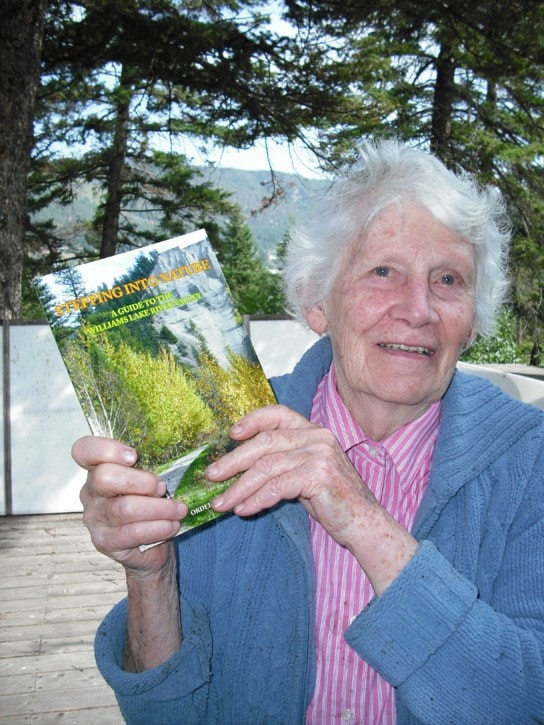A natural history guide to Williams Lake River Valley is now available for the public.
Stepping into Nature: A Guide to the Williams Lake River Valley, was co-authored by Ordell Steen and Anna Roberts and produced by the Williams Lake Field Naturalists. The 86-page guide is illustrated with colour photographs and maps, and is jam-packed with useful information.
The guide is a convenient size for people to pack with them on the 12-kilometre trail that extends from Scout Island to the Fraser River.
“We hope people will put the guide in their pocket and take it hiking with them,” Roberts says. “It’s got maps that explain how to get into the valley and where the trails go.”
Roberts says the guide is something she and other members of the Field Naturalists have been working on for at least 10 years. She says Steen took the bull by the horns and finally finished the project.
“We want people to look around when they are exploring the valley. It’s a very diverse place," Roberts says. "The guide documents what people can see down there.”
She says the Williams Lake River Valley provides an outstanding opportunity to experience nature in a near-urban location. “The upper part of the valley lies within the city boundaries.”
The guide notes that improvements to the main trail along the valley bottom, include construction of 20 bridges, numerous interpretive signs, benches, parking lots, and two side trails. The guide will also help expand the experience and make this excursion into nature more user friendly.
The guide is conveniently colour-coded to highlight the various parts of the book, which include sections on geology, wetlands, the river, forests, clearings, grasslands, first people and an index.
Steen wrote the geology section, which reaches back millions of years, describing how Alberta was once the western coastline of North America. “Most of the bedrock we see in the lower valley originated in an ancient tropical ocean closer to China than Canada,” Steen writes.
During later ice ages, glaciers formed a big lake over present-day Williams Lake that sent the flow of the Fraser River north, and deposited huge volumes of sand and silt into the valley. Over the centuries Williams Lake River has eroded the valley, making it deeper and deeper.
Anna describes the different plants and creatures, great and small, that utilize the different habitats in the valley – the river, wetlands, forests, and dry, sun-parched slopes. The habitat is very diverse.
Ecologist Ray Coupe, who also contributed to the project, describes the valley as an incredible resource right next to the city. “It’s a little gem we have right here.”
He says that while the valley sits in a single dry interior Douglas fir biogeoclimatic zone, its diversity is reflected in at least eight distinct sub-zones or forest ecosystems. “It is very diverse with east and west-facing slopes. The south-facing side which gets more sun is grassland. The valley bottom and north-facing slopes are forest.”
The appendices in the back of the book list 140 plants species, 19 mammals, and 25 species of birds.
The book is laid out with an overview of information printed in black ink on a white background, while more detailed information is presented in shaded sidebars.
All proceeds from the guide book go to the Williams Lake Field Naturalists. “We wrote it for them,” Roberts says.
Copies of the guide can be purchased at the Scout Island Nature Centre, the Open Book or at the Station House Gallery.
